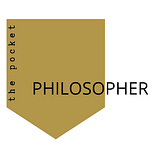*We wanted to make sure we followed up with the podcast version of today’s letter in case that would be more convenient. We had some technical problems on the first send, enjoy!
Good morning philosophers,
We’ve really enjoyed piecing together the story of duality and all it has to say about the way we relate to the world and to one another.
We’ve seen the world through the eyes of Taoism, which portrays all of us as a part of the whole, emanating holistically from within nature itself. We’ve passed over Plato and witnessed how the earliest thinkers in the western disciplines approached the problem of material and thought. And yesterday we saw how those ideas along with hundreds of others, held on through hundreds of years of oppression and came out the other side interesting hybrids of their ancestors.
Each of these philosophies was limited in a sense because it was based upon intuition, thought, and spiritual observation. With that said, more often than not these experiences produced a worldview that was completely in line with what we are observing today in science, but there was no way to verify and clarify those hypotheses.
In many respects, one should be overwhelmed by the way in which modern science (especially physics) simply affirms the intuitions and insights of spiritualists and philosophers from the last few thousand years.
And so today we’ll make a pass over physics not so much to learn what it has to “fix” for us in how we see the world, but how it is continuing the unfold the same intuitions that humans have held for millennia—that we are much more one that we are separate, and that we are emanating from a ground of being still a bit beyond our understanding.
Every morning I write an email exploring life through the eyes of the world’s greatest thinkers. Sign up here if you would like to receive it directly in your inbox.
✓
No doubt, in a few thousands years people will look back out our primitive physics and sciences and wonder how we could be missing so much. But the only way forward is to maintain that deep level of epistemic humility we spoke about a few weeks ago, continue hypothesizing, and continue observing and recording what we find.
This leads us to look at dualism from the eyes of a physicist. For someone who observes nature—whether that be atomic or cosmic—what does the universe look like? Are we separate or individuated? Can we observe Plato’s world of forms? Can we pinpoint consciousness or the soul? Can we find a separation between an eternal existence within and a temporary body without?
The picture that observable physics is painting for us so far, is one of deep integration and oneness. Let me explain.
It would appear that consciousness, or the mind let’s say, is much more of an emanating phenomenon from the very material we are made of, than it is a separate state of being. To put it another way, we are less the “voice in our head” or the singular way that we perceive ourselves, than we are the collective awareness of the very atoms of which we are made.
Humans especially have a tendency to identify with this emanating phenomenon, which aligns perfectly with so many ancient teachings—from Jesus to the Buddha—about the dangers of ego identification and self-focused thinking.
Moreover, these particles of which we are made, they appear to hold properties within themselves that would make them inherently non-dualistic.
For example, one of the most recent observations particle physicists have uncovered, is the ability for particles to be two places at once. This is largely due (they believe) to all of nature’s capacity to be simultaneously a wave and a particle. Existence at its most basic level is at least two types (wave and particle) and can be in at lest two places at once!
If you’d like to learn more about how scientist think this is possible, this is a great video which can explain in detail.
In many respects, our very nature is capable of being non-dual. This is true of all of life and all of existence. Therefore, to exist is itself a non-dual experience.
The implications of this are profound. For example, this logically negates the basis for differences of everything from race to gender. This even negates the differences we might feel between ourselves and a pet, or an animal, or a tree.
A quick note of clarification: in our currently fractured social-political world perceived differences have been used to oppress, marginalize, and even kill various groups of people. This scientific observation does not negate the pain and suffering that folks in marginalized communities have felt and continue to face.
It also does not negate a need to celebrate and uplift difference for the beauty and diversity if brings into our collective life. Instead, science makes these differences nominal, in that they are differences to be celebrated from which we can mutually learn from one another, but not differences which makes certain groups or people superior to another.
For example, did you know we share 60% of our DNA as human beings with bananas?
Fundamentally all of existence is much more similar than it is different.
Imagine a philosophy of life in which we as humans saw the world not through binary lenses of this or that, me and them, I and thou, but instead as many expressions of the same whole.
These are the teachings of so many ancient religions and philosophies. And so much of these teachings begin with understanding the ego (or your idea of yourself as separate) as a cruel master which we must confront and overcome. Grounding ourselves in the reality of nature instead of our egoic interpretation of nature is a massive project.
But the benefits are overwhelmingly positive. Imagine wanting to bring harm or feeling hatred toward something which has a molecular structure that is 99.999% or even 100% identical to your own DNA.
The question emerges, can you hate another person and also love yourself?
Until tomorrow,
-TPP
Know someone who would enjoy this reflection, share it with them here!
References:
https://en.wikipedia.org/wiki/Quantum_tunnelling
https://www.saps.org.uk/saps-associates/browse-q-and-a/473-how-much-dna-do-plants-share-with-humans-over-99
Image:
Image by Garik Barseghyan from Pixabay















Share this post